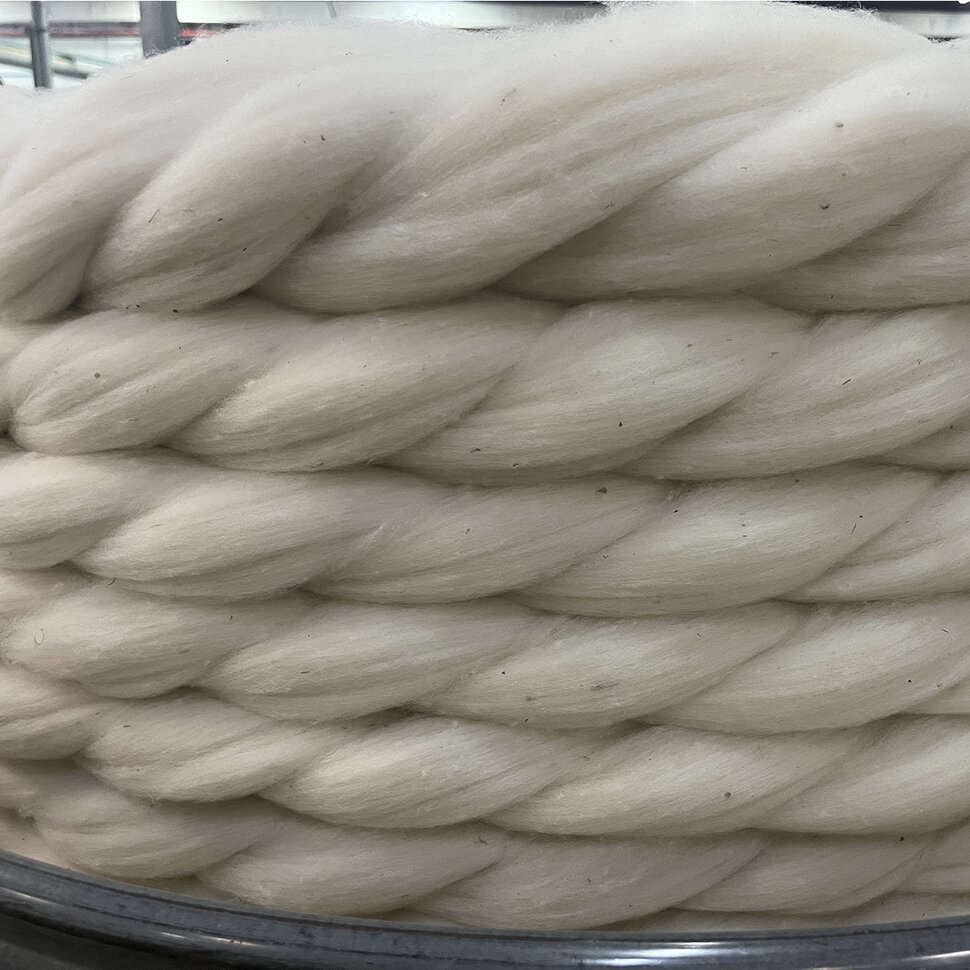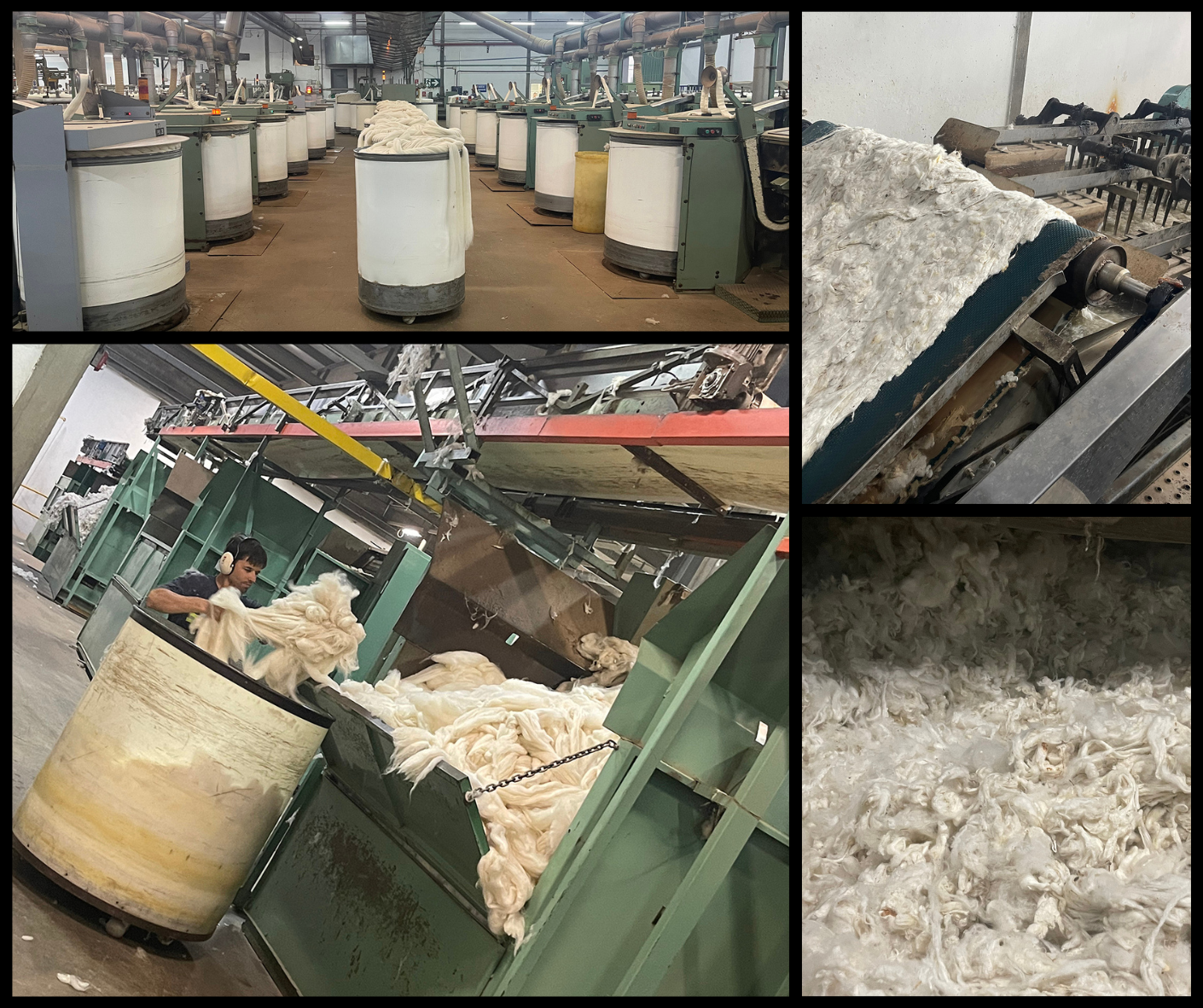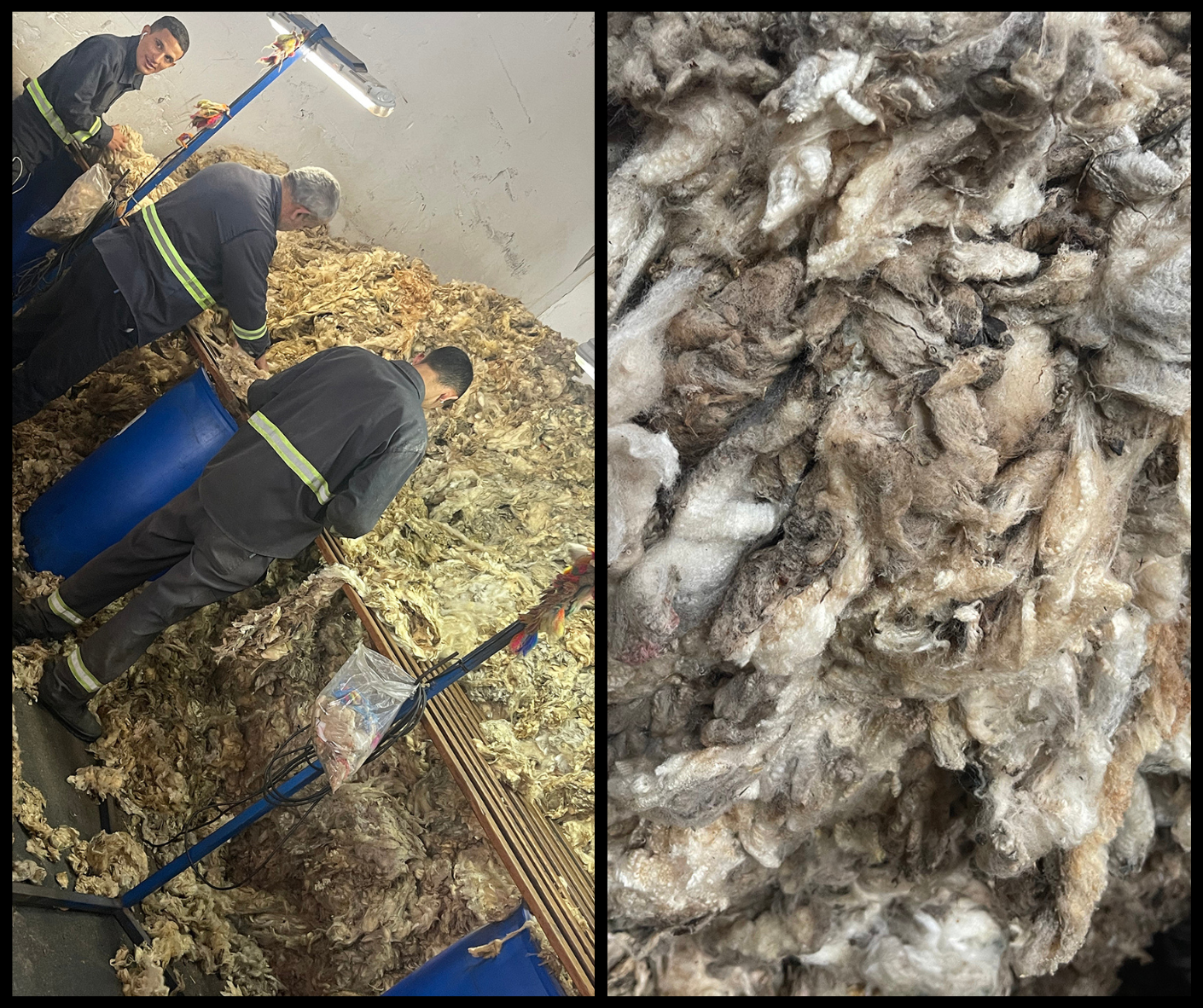The Wool Mill

One of the highlights of my trip to Uruguay last spring was visiting the Tops Fray Marcos wool mill, the country's largest plant for processing and combing wool. The wools processed at Fray Marcos are exported throughout the world. Turkey, Italy, and China are the top buyers of the wools processed at this facility.

As I entered the mill, I couldn't help but notice the magnificent, wavy tile ceilings that adorned the expansive hanger-like buildings. It's always a delight to discover exceptional design and architecture within structures that serve primarily utilitarian purposes. The space was filled with large bales of fleece originating worldwide. These bales were anything but soft and fluffy; they were tightly packed together, as hard as rocks.


During our visit to Uruguay, we noticed that nearly every business had a furry friend – and the mill we visited was no exception. Our tour guide was a friendly canine who made our visit more enjoyable!

Each structure was filled with workers operating massive industrial equipment. As we toured, the owner explained that all of the equipment contained within the mill was French, British, and Italian and no longer manufactured. Maintaining the equipment and securing parts is a challenge. All modern equivalents are manufactured in China and are inferior and, therefore, not a viable option.


I lost track of the processes needed to produce a final wool top. Machine after machine was washing, scouring, drying, washing some more. And the human labor needed! Some fleeces required hand-picking, especially those from Peru. Peruvian fleeces can be quite challenging to work with.

Uruguay has embraced renewable energy options due to the absence of natural energy resources. The mill's owner installed wind turbines to power the plant, while eucalyptus trees are grown throughout the country and used as fuel. Additionally, the mill boasts an eucalyptus orchard with stacks of firewood piled high.

While some of the wool produced in Uruguay will be turned into yarn, the majority is still used for industrial purposes. Wool intended for yarn production will be sent elsewhere to be spun, such as Franca, Maxima, and Marina from Manos del Uruguay.
While in the countryside, we also visited San Pedro de Timote, a historic Uruguayan ranch. Once the largest sheep farm in the world, it was also a major player in the global wool market. Pedro, a gaucho born on the ranch, gave us an unforgettable tour. Despite the language barrier, his love and passion for the ranch were evident, and he expressed his sadness at its decline. Nowadays, the ranch operates solely as a hotel and event center. I particularly enjoyed sitting by the fireside, surrounded by the pleasant aroma of burning eucalyptus logs.


The time spent at the mill and ranch reaffirmed what I already knew about our industry and opened my eyes to the labor intensity of the process. Considering the machinery, labor, maintenance, and utilities costs at just one plant that combs and cleans wool, it's easy to see how expensive it can be. Moreover, someone has to raise and shear the sheep, spin the wool, dye it, divide it into small balls, label it, and so on. Despite all these expenses, I'm amazed at how affordable wool yarn still is!
Surprisingly, the hand-knitting industry, by nature, is quite fragile. During the early days of my career, a Coats and Clark representative pointed out that the production of fibers used for crafts represents only a fraction of the milling industry. Astonishingly, this industry continues to thrive in a corporate world where profitability is the primary focus.
The fibers processed at mills are used in various products, such as carpets, clothing, and various industrial applications. The rise in the use of synthetic fibers further reduced the need for sheep farms, thus turning former grand ranches into boutique hotels. We should never take yarn for granted.
There is a time and place for all players within the yarn industry, whether it be low-cost synthetics sold at discount stores or art yarns hand-dyed by individual dyers. However, when the industry becomes unbalanced, as it has recently, it is cause for concern. The industry's stability is at risk without the success of more prominent manufacturers like Red Heart or Rowan. Legacy companies are vital to the industry's survival and can not withstand more companies' failure, such as Classic Elite Yarns.
I have spent my whole life in this industry, with memories and experiences dating back to the mid-1970s. I cherish it deeply and have seen it go through both prosperous and difficult times. When you're looking to buy yarn, remember that you have a choice, and I urge you to continue supporting the labels that form the bedrock of this industry. Without them, our survival – including my business – could be uncertain.

Cecilia, who represents the yarn division of Manos del Uruguay, accompanied us on our tour. We were so enamored with her sweater that we decided to recreate it ourselves. Her sweater was woven, but we were able to capture the essence and recreate it using Cardo from Manos del Uruguay. The pattern for Cecilia's Sweater is now available for download on Ravelry – so you too can enjoy this beautiful design and the pleasure of working with Corriedale wool!





Comments